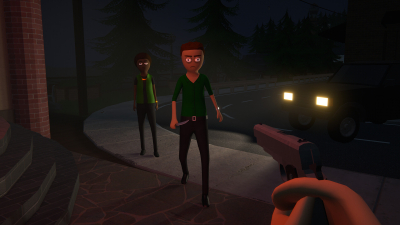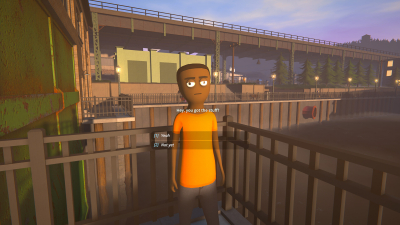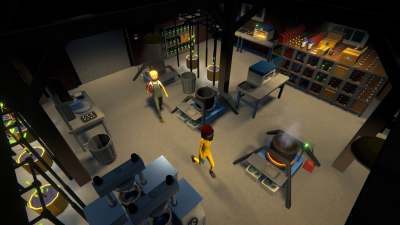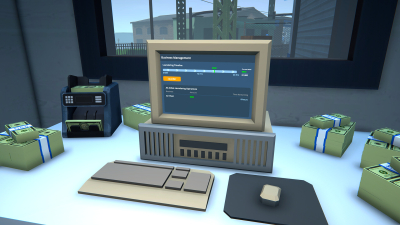Schedule I review
My Foray into a New Realm
I still remember the excitement that surged through me when I first heard about Schedule I Game. My curiosity was piqued not by a flashy advertisement or enigmatic rumors but by the promise of a world that defied the mundane. After installing the game, I was immediately struck by its distinctive approach to storytelling and gameplay. Unlike anything I had played before, Schedule I Game promised a journey that was as much about self-discovery as it was about exploring intricate plot lines and tactical challenges.
The interface presented itself with a confident yet inviting allure. The initial load screens and navigational cues suggested that behind the scenes, countless hours of thought and creativity had been invested in crafting every detail. I couldn’t help but feel that I was about to step into not just a game, but an experience that could potentially reshape my understanding of interactive storytelling.
Intricate Gameplay Mechanics That Challenge the Norm
It was clear from the onset that the creators of Schedule I Game were unafraid to break away from traditional paradigms. The mechanics were designed to require a thoughtful engagement on my part, inviting me to explore and experiment in ways that most modern titles rarely dare. I found that every action, from simple interactions with the environment to complex maneuvers during high-tension moments, was imbued with a layer of strategy. Rather than relying solely on speed or reflexes, the game demanded perseverance and ingenuity.
The decision-making process felt weighty and consequential. Each choice I made seemed to compound into a beautifully complex web of narrative outcomes and distinct outcomes. This wasn’t about the simple cause and effect of many conventional games; instead, it presented a tapestry of interconnected systems where every small decision could ripple through the storyline, enhancing both the personal challenge and the overall depth of the game.
The Poetic Cadence of the Narrative
Schedule I Game took me on a narrative journey that was both exhilarating and profoundly introspective. The storyline unfolded in unexpected ways; at times, it felt almost poetic in its execution. I was drawn into a labyrinth of characters, each of whom seemed to have their own unique agenda and backstory. Their interactions were conveyed through a blend of stunning visuals and artful dialogue, leaving me to wonder about the deeper philosophical underpinnings embedded within the game.
The narrative wasn’t merely a backdrop for the action; it was the heart and soul of the experience. I found myself pausing for a moment or two after significant encounters, letting the rich textures of the narrative resonate within me. These moments of reflection were an integral part of what made the journey so immersive, ensuring that every twist and turn of the plot was not just witnessed, but felt deeply in my core.
Visual Aesthetics That Stir the Imagination
One of the most striking aspects of Schedule I Game was its visual presentation. The developers went to great lengths to ensure that every visual element was a work of art. From the smallest detail in the background scenery to the dynamic lighting effects during pivotal scenes, the game was a feast for the eyes. I was particularly impressed by how the art style seamlessly blended realism with a touch of surreal elements, creating environments that felt both grounded and otherworldly.
Every level or area I explored seemed to tell its own story. The use of color, light, and shadow contributed an additional layer of mood that was both intimate and expansive. Whether I was traversing vast, open landscapes or delving into intricately designed, claustrophobic interiors, the visual cues were masterfully executed, inviting me to pause and appreciate the artistry behind each frame.
Soundscapes That Envelop and Elevate the Experience
The auditory experience in Schedule I Game played a pivotal role in defining its unique character. The sound design was carefully curated, with every note and ambient sound working in harmony to create an immersive atmosphere. I found myself completely absorbed by the rich soundscapes that ranged from subtle environmental murmurs to powerful, emotionally charged musical themes during critical narrative moments.
There was a poetic synchronicity between the visuals and the audio that significantly elevated my experience. In moments where the narrative demanded introspection, the gentle layering of sounds provided a soothing backdrop. Conversely, during moments of tension or rapid movement, the music would surge in tandem with the action, effectively heightening my senses and keeping me on the edge of my seat. The audio design was not just about filling silence but was an active participant in the storytelling process.
Responsive Controls and Intuitive Interfaces
From the moment I picked up the controller, Schedule I Game’s intuitive design shone through. The controls felt responsive and natural, allowing me to seamlessly transition between exploration, puzzle-solving, and dynamic encounters without ever feeling encumbered by clunky mechanics. The learning curve was moderate, which meant I could quickly grasp the game’s core systems while still enjoying the challenge of mastering more advanced techniques.
Every interface element seemed deliberately positioned to ensure that I was never overwhelmed. The in-game menus, health indicators, and mission updates all adhered to a simple yet elegant design, enhancing both the aesthetic appeal and the functional utility of the game. I particularly appreciated how the control schemes were customizable, offering a tailored experience that catered to both swift hands and more methodical types of players.
Culturally Rich World-Building
What truly set Schedule I Game apart was its emphasis on constructing a world that felt alive and vibrantly diverse. The developers created a setting that was deeply influenced by a tapestry of cultural narratives, blending futuristic ideas with time-honored traditions. As I navigated the bustling urban districts and wandered through serene rural outposts, I came to appreciate the thoughtful cultural references interwoven into every story segment.
The environmental storytelling was exceptional. There were subtle details anywhere I looked—a mural on a far wall, ancient inscriptions etched into stone, or even the dialects spoken by various characters—that conveyed a rich backstory and provided context to the world’s evolution. This cultural layer added depth that transformed every interaction into an opportunity for learning and personal growth, making the experience uniquely engaging on an intellectual level.
A Symphony of Puzzles and Challenges
My journey through Schedule I Game was punctuated by a series of puzzles and challenges that ranged from accessible to mind-bendingly intricate. The puzzles were not arbitrary; they were essential components that reinforced both the narrative and the thematic elements of the game. I found that solving these puzzles was akin to slowly unveiling the mysteries behind the vibrant world I was exploring.
The intricacies of the puzzles invited deep engagement. Simple environmental puzzles transitioned into multi-layered challenges that required critical thinking and lateral problem-solving skills. I spent considerable time analyzing clues and re-evaluating scenarios in order to progress. These challenges promised a sense of satisfaction that was as refreshing as it was invigorating. They demanded both patience and ingenuity, qualities that I relished cultivating over long gaming sessions.
Dynamic Interactivity and Character Encounters
Interactivity in Schedule I Game is delivered through a richly cast ensemble of characters, each imbued with distinct personalities and intricate motivations. Throughout my playthrough, I encountered a range of characters—from enigmatic mentors and fierce allies to morally ambiguous figures whose intentions were never entirely clear. These interactions were more than mere dialogues; they presented opportunities to explore complex themes of duality, ambition, and resilience.
I particularly enjoyed the moments when character interactions evolved based on decisions I made along the path. Every conversation felt meaningful, and even minor interactions had the potential to shape the trajectory of my experience. The game cleverly balanced scripted events with opportunities for spontaneous, branched dialogues, encouraging me to return to pivotal moments in order to uncover hidden layers of the narrative.
Exploring a Universe of Boundless Creativity
One of the most enchanting aspects of Schedule I Game is its expansive universe, which stretches far beyond the confines of a single narrative arc. I found that each game segment opened up a new realm of possibilities, where creativity and ingenuity were not just encouraged but required. As I moved from one environment to another, I was treated to a series of mini-universes—each with its own distinct themes, rules, and aesthetic moods.
The game invites players to immerse themselves in a mosaic of settings that range from futuristic dystopias to idyllic, nature-infused paradises. Transitioning between these worlds was seamless, and the subtle nods to different genres and eras helped cultivate a distinctive atmosphere that felt both boundless and meticulously curated. I never felt confined; instead, I was constantly reminded of the myriad possibilities that each new environment presented.
Adaptive Difficulty That Respects the Player
A standout feature in my experience with Schedule I Game was its ability to adapt to my personal play style. The challenges were carefully balanced in such a way that the game recognized both my successes and my struggles, adjusting the level of difficulty accordingly. There were moments when the game offered a gentle nudging, encouraging me to explore new strategies, and moments when it dialed up the intensity to demand sharper focus and quicker reflexes.
This adaptive mechanism made the experience feel personalized in a way that few modern games manage to accomplish. Knowing that the game was continuously adjusting to maintain the perfect balance between challenge and enjoyment was tremendously reassuring. It allowed me to test my limits in ways that felt both fair and fulfilling, ensuring that the journey was never monotonous or overly punitive.
The Robust Engine Behind the Scenes
Beneath the artistic veneer and intricate design, Schedule I Game is powered by a robust technical foundation that is as impressive as it is complex. I was particularly captivated by the smoothness with which the game handled transitions between different areas and the impeccable integration of various gameplay elements. Even during the most scene-intensive moments, there were no noticeable drops in performance, which is a testament to the careful optimization and technical craftsmanship embedded within the game’s core.
The technical engine not only supports the high-fidelity graphics and sound design but also ensures that every interactive element functions flawlessly. I noticed that even minor details, such as environmental physics and real-time conversation animations, were executed with a precision that reflects the high standards set by the developers. This level of meticulous attention to technical detail directly contributed to the overall immersion and made each moment of gameplay feel entirely seamless.
An Emotional Journey of Discovery
While the visual and technical elements of Schedule I Game are undeniably impressive, what truly resonated with me was the emotional landscape that the game constructed. Walking through the different chapters of the story, I experienced a spectrum of emotions, from moments of quiet introspection to heart-pounding excitement. The character arcs, pivotal plot twists, and even the ambient cues worked together to evoke a deeply personal response from me as a player.
I came to see the game not just as a series of challenges, but as a narrative mirror reflecting the complexities of human emotion and the struggles of personal growth. Each encounter, each decision, carried with it an emotional weight that encouraged me to think, to feel, and ultimately, to see parts of my own journey within the unfolding game narrative. This emotional synergy between the game and my own lived experience was among the most compelling aspects of my playthrough.
Strategic Depth Coupled with Spontaneous Creativity
One cannot help but appreciate the strategic layers embedded within Schedule I Game. Every moment of the gameplay seems to be a testament to the careful balance between planning and on-the-spot creativity. I found immense satisfaction in devising strategies to overcome the multifaceted challenges presented by the game. Whether I was preparing for a particularly demanding encounter or simply navigating through a densely packed area, I was constantly evaluating my resources and planning my next moves.
What made these moments even more delightful was the game’s encouragement of spontaneous creativity. There were instances where deviating from my meticulously planned approach led to innovative solutions that not only advanced the story further but also uncovered hidden aspects of the game’s rich lore. This dynamic interplay between strategy and adaptability kept me engaged and constantly learning, ensuring that every session was as unpredictable as it was absorbing.
Community Interactions and Shared Experiences
Throughout my adventures in Schedule I Game, I discovered an undercurrent of community that added yet another vibrant layer to the experience. While the heart of the game lies in its solo narrative, there exists a dynamic ecosystem of ideas, feedback, and experiences shared by fellow enthusiasts. I found myself drawn into online discussions, exchanging theories with other players and comparing notes on the game’s subtleties that might have otherwise escaped my notice.
This sense of shared discovery and admiration for the game’s craftsmanship enriched my personal journey. Interacting with a community that was both passionate and insightful not only bolstered my understanding of the game’s layered narrative but also reinforced the idea that Schedule I Game is a collaborative celebration of imaginative storytelling. I took delight in uncovering hidden secrets that others had unearthed and in contributing my own discoveries, creating an unspoken bond with a global network of players united by their love for the game.
To download the app, you will get links to the Official Website and/or official digital markets.



























Leave a comment
Your comment is awaiting moderation. We save your draft here
0 Comments